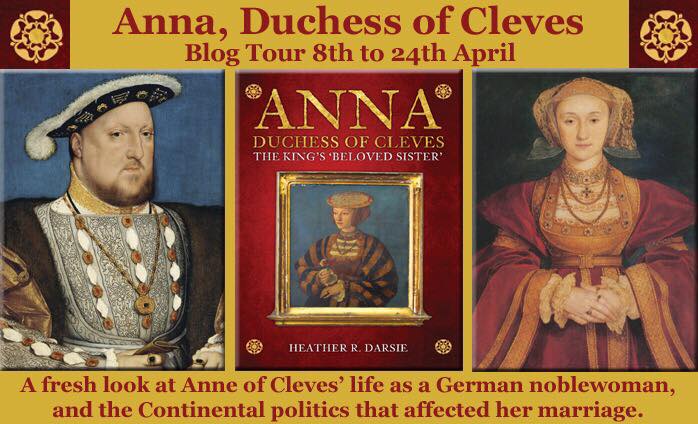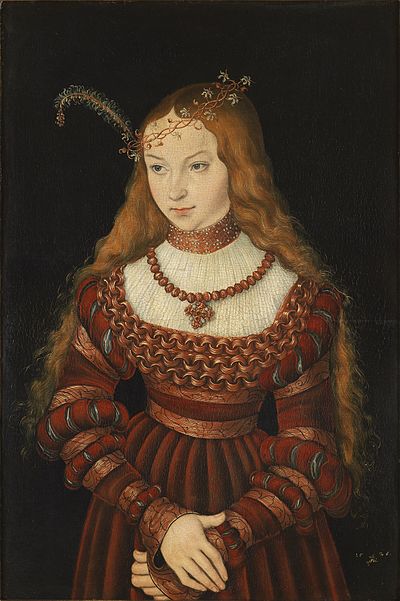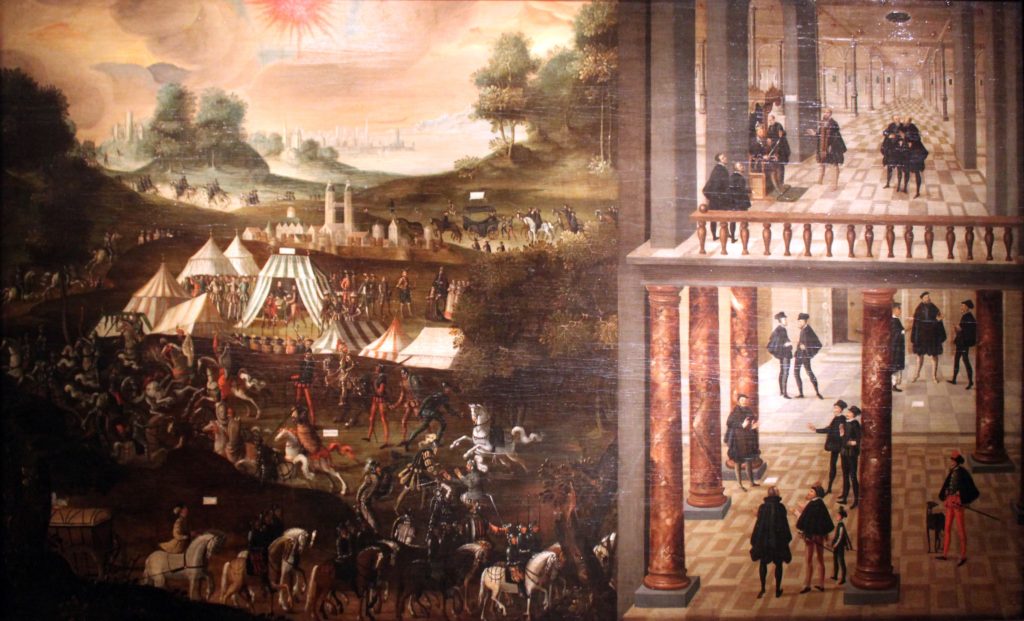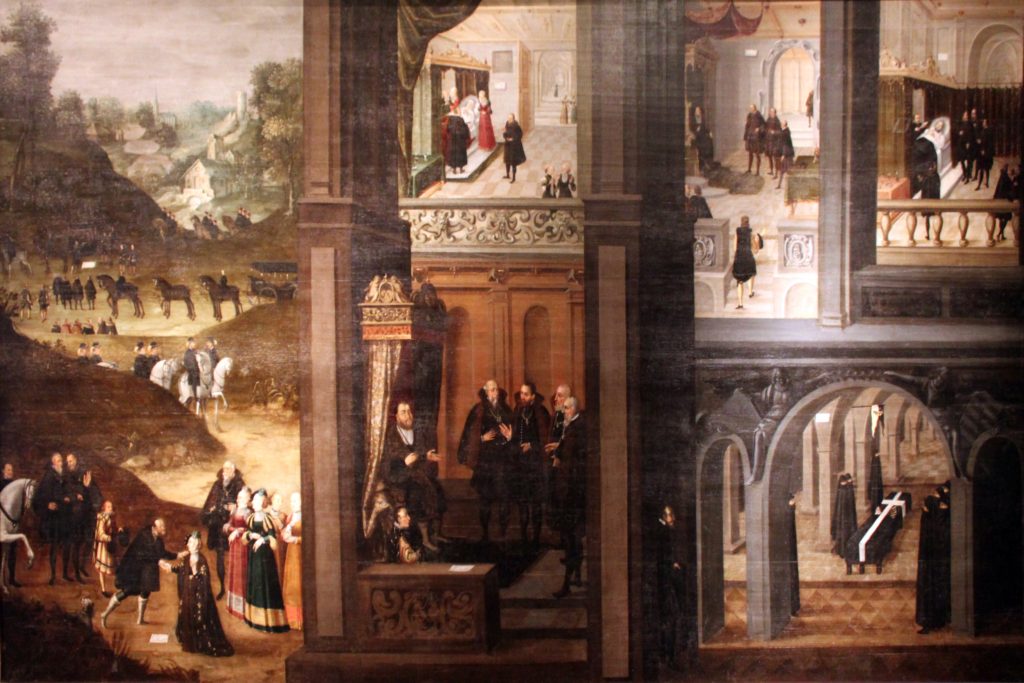I’m thrilled to be taking part in Heather R. Darsie’s blog tour to celebrate the upcoming release of her new biography of Anne of Cleves. To mark the occasion, Heather has written a guest post about Johann Friedrich, Anne’s brother-in-law.
Happy reading!

Johann Friedrich, Anna of Cleves’ Powerful Brother-in-Law
By Heather R. Darsie
Johann Friedrich Wettiner, Elector of Saxony, was born 30 June 1503 to Elector John of Saxony and his first wife Sophia of Mecklenburg. Sadly, Sophia passed away on 12 July 1503, shortly after Johann Friedrich’s birth. Johann Friedrich was born in Torgau, Saxony. His father married again, bringing Johann Friedrich two sisters and one surviving brother.

Sybylla of Cleves by Lucas Cranach the Elder, 1526.
Johann Friedrich married Sybylla of Cleves in June 1527; she was nine years his junior. The wedding was a grand festival, celebrated by the famed Torgau Tourney. The festival took place over several days in the City of Torgau and was put on by Johann Friedrich’s father, Elector John of Saxony. Over 31,000 people attended the festivities over nine days. On Sunday, 2 June 1527, a church service was held in the market square of Torgau. Next, Johann Friedrich’s new bride Sybylla was adored by those gathered. After that, the days-long tourney began. It was attended by over a dozen high-ranking members of German nobility such as princes and dukes, around twenty counts, and dignitaries from the University of Wittenberg who included the famous reformers Philipus Melanchthon and Martin Luther. On top of that, there were scores of lesser nobles and knights present. All the horse and carriage traffic put a strain on Torgau.

A portrait of Johann Friedrich by Titian c. 1550. It is held by the Museum of Art History in Vienna, Austria.
Johann Friedrich and Sybylla welcomed their first son, Johann Friedrich II, known as the Middle, on 8 January 1529. Their second son, Johann Wilhelm, was born 11 March 1530. A third son, Johann Ernst, was born in 1535 but died shortly thereafter. Johann Friedrich and Sybylla’s youngest son, Johann Friedrich III, known as the Younger, was born 16 January 1538. Johann Friedrich and Sybylla enjoyed a loving relationship.
Johann Friedrich became Elector and Duke of Saxony in 1532. He shared the title of Duke with his younger half-brother until 1542, when Johann Friedrich separated lands for his younger brother to rule alone. Johann Friedrich was a staunch supporter of Martin Luther and the German Reformation. He and Philip, Landgrave of Hesse, established the Schmalkaldic League in 1531. The Schmalkaldic League, sometimes referred to by English speakers as the Protestant League, was a defensive agreement of pro-Reformation, anti-Imperial territories in the German-speaking portion of the Holy Roman Empire. After Johann Friedrich’s father-in-law, Johann III of Cleves, died in February 1539, Johann Friedrich cautiously began involving his brother-in-law Wilhelm V of Cleves. However, Wilhelm was more interested in securing a marital alliance for his unmarried sisters, and pursued an Anglo-Cleves alliance through marriage of his elder sister Anna of Cleves to Henry VIII of England.
Johann Friedrich was not heavily in favor of the marriage between Anna of Cleves and Henry VIII, but entertained it until the passing of the Six Articles by English Parliament in June 1539. After that, the young relationship between Johann Friedrich and Henry VIII cooled. Several Imperial Diets took place throughout the 1540s in an attempt to quell the rising tide of Protestantism in Germany.
In 1546, the Schmalkaldic War broke out in the southwest of Germany before making its way to Saxony. Johann Friedrich did his best to defend his territories against the Holy Roman Emperor Charles V, but was ultimately captured along with one of his sons after the battle of Mühlberg in April 1547. Charles V then headed to Wittenberg, besieging the city and the castle where Johann Friedrich’s beloved wife Sybylla and other two sons were fortified. Wittenberg fell, and Johann Friedrich capitulated in May 1547.

The 1547 Battle of Muehlberg. The painting is from c. 1630a and is held by the German History Museum, Berlin.
As part of the Capitulation of Wittenberg, Johann Friedrich handed his electorate over to Maurice of Saxony in exchange for Johann Friedrich’s death sentence being commuted to imprisonment for an indeterminate period. Johann Friedrich was held captive by Charles V until 1552. During his time in captivity, Johann Friedrich and Sybylla exchanged numerous letters.
Johann Friedrich was released and returned to Sybylla. Johann died in April 1547, and Sybylla followed him quickly in June 1547. Johann Friedrich and his wife are buried in St. Peter and Paul, Weimar.

Johann Friedrich’s return. Sybylla of Cleves can be seen greeting Johann Friedrich outside the castle, and her death is depicted in the top left. This is also from c. 1630 and held by the German History Museum.
Anna, Duchess of Cleves: The King’s ‘Beloved Sister’ by Heather R. Darsie is released 15 April in the UK and 1 July in the US. If you live in the US and cannot wait until July, you can order a hardcover from the UK Amazon. The book can be purchased here:
US Hardcover: https://www.amazon.com/gp/product/1445677105?pf_rd_p=1cac67ce-697a-47be-b2f5-9ae91aab54f2&pf_rd_r=3N5CGT7W6TPG1X0AF7PZ
Sources & Suggested Reading
- Flathe, Heinrich Theodor. “Johann Friedrich (Kurfürst von Sachsen).“ Allgemeine Deutsche Biographie. Vol. 18. Historischen Kommission bei der Bayerischen Akademie der Wissenschaften (1881).
- Darsie, Heather. Anna, Duchess of Cleves: The King’s Beloved Sister. Stroud: Amberley Publishing, 2019.
- Seemann, Hellmut. Europa in Weimar: Visionen Eines Kontinents. Go?ttingen: Wallstein, 2008.
- von Kleve, Sibylla, and Karl August Müller. 1838. Briefe Der Herzogin Sibylla von Jülich-Cleve-Berg an Ihren Gemahl Johann Friedrich Den Grossmüthigen, Churfürsten Von Sachsen – Primary Source Edition. Dresden and Leipzig: Gerhard Fleischer.

















Dear Natalie, thanks so much for taking part in the Blog Tour. Heather has excelled herself with the research she has done for this book and I absolutely love the front cover of the book.